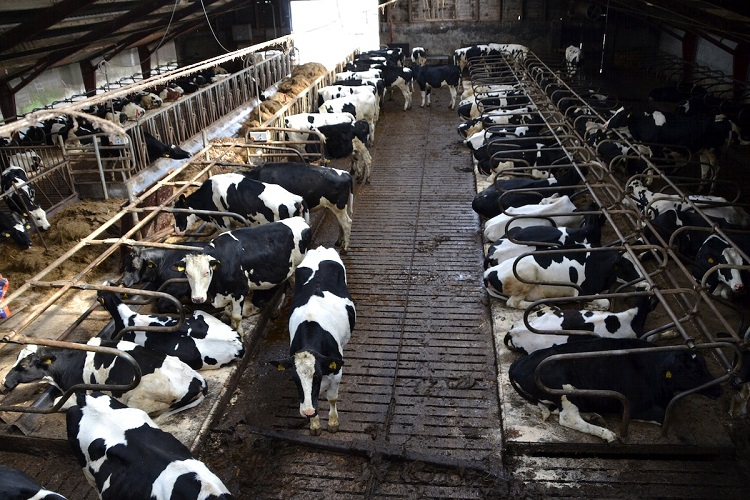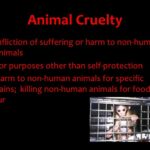Farm animals occupy an intricate web within our agricultural systems, representing both a source of sustenance for humans and sentient beings deserving ethical consideration. The question arises: Are farm animals truly protected under the laws designed to uphold animal welfare? To address this enigmatic query, one must explore the breadth of these legal frameworks, their scope, and the paradox of their implementation.
To comprehend the efficacy of animal welfare laws, it is crucial to delineate the distinction between animal welfare and animal rights. Animal welfare pertains to the humane treatment of animals, often concentrating on their well-being while permitting their utilization in agricultural practices. Conversely, animal rights advocate for the fundamental freedom of all sentient beings, emphasizing an individual’s intrinsic worth beyond utilitarian value. Farm animals, thus, find themselves caught in this dualistic paradigm, often ensnared in an ethical limbo.
Legal frameworks aimed at protecting farm animals exist within a patchwork of regulations that vary widely across different jurisdictions. In the United States, for instance, protections are predominantly enforced at the state level, resulting in a fragmented landscape. The Animal Welfare Act (AWA) serves as a federal foundation, but its reach is limited primarily to animals used in research, transport, and exhibition. Intriguingly, the AWA does not encompass the vast majority of farm animals, thereby excluding a significant segment of our livestock from its protective measures.
To visualize this disparity, imagine a fortress intended to safeguard the inhabitants of a kingdom. The walls are sturdy, erected with the intent to provide security. However, within this kingdom, the livestock roam freely outside the protections of those very walls, vulnerable and exposed. The variances in state-level laws further complicate this scenario, creating a patchwork of protections that leave many farm animals unguarded, much like a kingdom riddled with chasms. Some states enact stringent laws banning extreme confinement or inhumane slaughter methods, while others offer minimal, if any, protections.
Among these laws, the practices of battery cage farming and gestation crates serve as alarming examples of how welfare regulations falter. These systems, which confine animals in cramped quarters, prioritize efficiency and production over the well-being of the animals themselves. Proponents argue that such practices are necessary for economic viability, yet one can hardly ignore the psychological and physical toll inflicted upon these sentient beings. The confinement evokes imagery of prisoners shackled in a dungeon: minimal movement and significant distress, leading to impaired health and heightened stress levels, all under the guise of agriculture.
Additionally, the enforcement mechanisms of existing laws often lack teeth. Even in states that have adopted forward-thinking policies, the implementation can be lethargic, with minimal oversight and scant resources dedicated to monitoring compliance. The legal system appears ambivalent, permitting widespread violations to persist unchecked. It calls to mind a putative shield that, through neglect, has corroded, leaving those it purports to protect perilously exposed.
Moreover, the public often lacks awareness of the abhorrent conditions many farm animals endure. Transparency remains elusive as corporate farming entities prioritize profit over humane practices. Investigative reporting, albeit sporadic, often reveals the continued existence of abusive conditions that, while illegal, are nonetheless prevalent. This perpetuates a culture of complicity, whereby consumers unwittingly contribute to systemic cruelty through uninformed purchasing choices. Like the ripples of a pebble dropped into a still pond, each consumer action sends reverberations through the agricultural landscape, impacting countless lives.
To counteract these realities, a holistic reevaluation of animal welfare laws is imperative. Advocacy groups are increasingly vocal, campaigning for reforms that would place the dignity of farm animals at the forefront of agricultural policies. A vigorous reform agenda would involve creating comprehensive federal legislation that encompasses all farm animals, prohibiting inhumane practices and setting enforceable welfare standards. Furthermore, establishing robust enforcement mechanisms would amplify the protective effects of these laws, ensuring that transgressions are met with substantial consequences.
The transition towards a more ethical agricultural system also necessitates a cultural shift among consumers. Education plays a pivotal role in this evolution. By demystifying the practices of industrial farming and highlighting the emotional lives of farm animals, consumers can make informed choices that align with humane values. Just as one might advocate for environmental stewardship, the concept of ‘food justice’ deserves equal gravitas, wherein ethical treatment of animals informs our dietary decisions.
In conclusion, while strides have been made in the realm of animal welfare laws, significant gaps remain that leave farm animals susceptible to neglect and maltreatment. The legal framework, as it stands, mirrors a palatial structure laden with opulence but rife with hidden vulnerabilities. It is incumbent upon advocates, consumers, and policymakers alike to knit a sturdy fabric of protections that encompasses all creatures beneath the agrarian umbrella. Only then can we hope to fulfill the moral imperative that demands the responsible and compassionate stewardship of our fellow beings. By shining a light on these issues, we move closer to a reality where farm animals are not merely resources but valued lives deserving of respect and protection.






